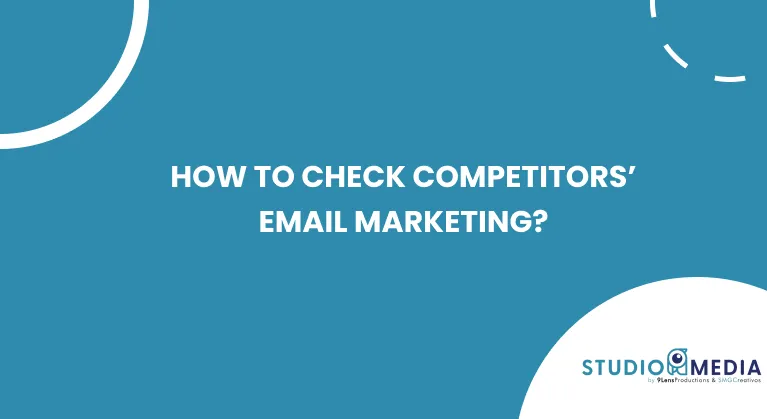In the competitive world of digital marketing, one of the best ways to stay ahead is by understanding what your competitors are doing. Email marketing remains a powerful tool, and monitoring how other companies use it can provide valuable insights to improve your own strategies. Analyzing competitors’ email campaigns not only allows you to see what type of content they are sending but also to identify trends, optimize your own emails, and spot opportunities to stand out in the market.
Step 1: Subscribe to Competitors’ Emails
One of the most direct methods to gather information on your competitors’ email marketing campaigns is to subscribe to their newsletters or mailing lists. This simple step allows you to receive their messages directly in your inbox, giving you access to all the content they are sending to their customers. This way, you can observe firsthand the frequency of their emails, the types of promotions they run, and the overall tone of their communication.
Many marketers adopt this approach as part of their research routine. Subscribing to competitors’ pages allows them to stay informed about the offers, messages, and strategies used to capture their audience’s attention. This step is crucial as it provides a solid foundation for further analysis.
Step 2: Essential Tools for Analyzing Email Marketing Campaigns
The next step is to use specialized tools that allow you to analyze competitors’ email campaigns in detail. Tools like Mailcharts, SendView, or Milled not only let you see the emails sent but also analyze key metrics like sending frequency, open and click rates, and email design.
These tools can also help you identify patterns in campaign calendars, compare different brands, and access historical data on campaign performance. Using these tools allows you to move from simple observation to conducting a more in-depth and strategic analysis of your competitors.
Step 3: Key Data to Analyze in Competitors’ Emails
Once you’re receiving competitors’ emails and using analysis tools, it’s important to know which specific aspects to review. Here are some key points:
- Design and structure: What type of design do they use? Are they using simple or more elaborate templates? How is the content structured?
- Call to Action (CTAs): What types of CTAs do they include? Are they clear and persuasive? Where are they placed within the email?
- Segmentation and personalization: Are they effectively segmenting their audience? Are they using personalization, such as names in greetings or content tailored to the recipient’s interests?
- Frequency and timing: How often do they send emails? Is there a pattern in the days and times they send them?
- Email subject line: What types of subject lines are they using? Are they creative, direct, do they include emojis or wordplay?
Reviewing these elements will give you a clear idea of the strategies that are working for your competitors and how you could adapt or improve them for your own campaigns.
Step 4: Evaluating Campaign Frequency and Calendar
The sending frequency and campaign calendar are crucial aspects to evaluate when analyzing your competitors. Sending too frequently could lead to subscriber fatigue, while sending too infrequently could cause them to lose interest. By observing how your competitors manage this balance, you can adjust your strategy to maximize effectiveness.
It’s also important to analyze specific sending times. If you notice that your competitors send emails on particular days or times of the day, you might try similar strategies to see if they yield better results. However, you could also choose to send at less crowded times to avoid direct competition in the inbox.
Step 5: Analyzing Content and Messaging Strategy
Content is the heart of any email marketing campaign. Analyzing what your competitors are communicating will give you a clear view of their strategic approach. Observe whether they are focusing on promotions, educational content, customer testimonials, or product news. What type of content seems to receive the most attention and response from customers?
Also, review the tone and style of their messages. Some brands opt for a formal and professional tone, while others prefer a more casual and friendly communication. Identifying these nuances can help you adjust the tone of your own emails to better align with your audience’s expectations and preferences.
Tips and Advice for Tracking Marketing Strategies
Effectively tracking competitors’ marketing strategies goes beyond just collecting data; it requires a systematic approach. Here are some tips to ensure you’re getting the most out of your efforts:
- Organize Your Findings: Use a spreadsheet or a specialized tool to document the emails you receive, noting the subject lines, the date of receipt, and key details like promotional offers or content themes.
- Regular Team Reviews: Hold regular meetings with your marketing team to review the emails received from competitors. Discuss what works well in their strategies and brainstorm how you can incorporate similar tactics into your own campaigns.
- Watch for Seasonal Trends: Pay close attention to how competitors adjust their campaigns during holidays or sales seasons. Are they offering special promotions? How do they change their messaging to align with seasonal themes? This can inform your planning for similar periods.
What to Check When Analyzing Competitors?
When tracking competitors’ email marketing campaigns, there are several key aspects that you should always verify:
- CTA performance: What are the most common calls to action, and how are they presented?
- Promotion focus: Are they pushing more direct sales, discounts, or subscriptions?
- Social media integration: How are they using email to drive traffic to their social profiles?
- Audience segmentation: Can you identify different segments they are targeting? How does the content vary between them?
- Innovations and novelties: Are they testing new techniques or formats? What seems to be working best for them?
How to Include Ads in Competitor Analysis?
In addition to analyzing emails, it is essential to consider how your competitors use ads to complement their email marketing campaigns. Some key points include:
- Ads in newsletters: Check if they include ads for other products or services within their emails.
- Display and remarketing ads: Observe if they are using remarketing strategies that might be linked to their email marketing.
- Synchronization between ads and emails: Analyze if there is synchronization between ad campaigns and emails, such as promotions appearing simultaneously on both platforms.
Integrating this analysis will help you gain a more comprehensive view of your competitors’ digital marketing strategy.
How to Check Competitors’ Email Marketing?
Checking your competitors’ email marketing involves a combination of manual techniques and automated tools. Here’s how to do it effectively:
- Subscribe to newsletters: The first step is to subscribe to your competitors’ newsletters to receive their emails directly. This allows you to see how they interact with their audience and what type of content they are sending.
- Create a reception calendar: Document each email you receive, recording the date and time of receipt. This will help you detect patterns in sending frequency and which days or times they prefer to send emails.
- Analyze the content received: Review each email received to identify key elements such as design, calls to action, promotional offers, and the tone of the message. Comparing these elements with your own emails will give you ideas on how you could improve your strategy.
Step-by-Step Guide to Competitor Email Marketing Analysis
Here’s a detailed method to effectively conduct a competitive analysis:
- Collect Emails: Over a set period, subscribe and collect all emails from competitors that interest you. Ensure you capture emails from different segments if possible.
- Classify Content: Sort the emails into categories such as promotions, newsletters, transactional emails, etc. This will help you identify which types of emails are most frequent and how they align with broader marketing strategies.
- Analyze Results: Use tools to analyze open rates, clicks, and other performance indicators. These metrics will allow you to evaluate how effective your competitors’ campaigns are and how yours compare.
Advanced Tools for Monitoring Competitors’ Email Marketing
Beyond basic tools, advanced solutions allow you to dive deeper into competitors’ email marketing analysis:
- MailCharts: This tool not only lets you see competitors’ emails but also provides detailed analysis of frequency, content, and performance.
- SimilarWeb: Though more general, SimilarWeb can offer insights into how email campaigns are impacting competitors’ traffic.
- Competitive Tracker by SendView: With this tool, you can monitor competitors’ email campaigns in real-time and receive alerts when new campaigns are launched.
Applying Competitive Insights to Your Campaigns
Analyzing competitors’ email marketing is an essential practice for any business that wants to stay relevant and competitive. By understanding how other companies capture their customers’ attention, you can adjust your own strategies to improve engagement, optimize conversion, and ultimately outperform your competitors.
Implementing the insights gained will allow you to refine your approach, test new tactics, and adapt your campaigns to maximize their effectiveness. Remember, competitive analysis is not a static process; it must be ongoing to keep up with trends and changes in the market.







